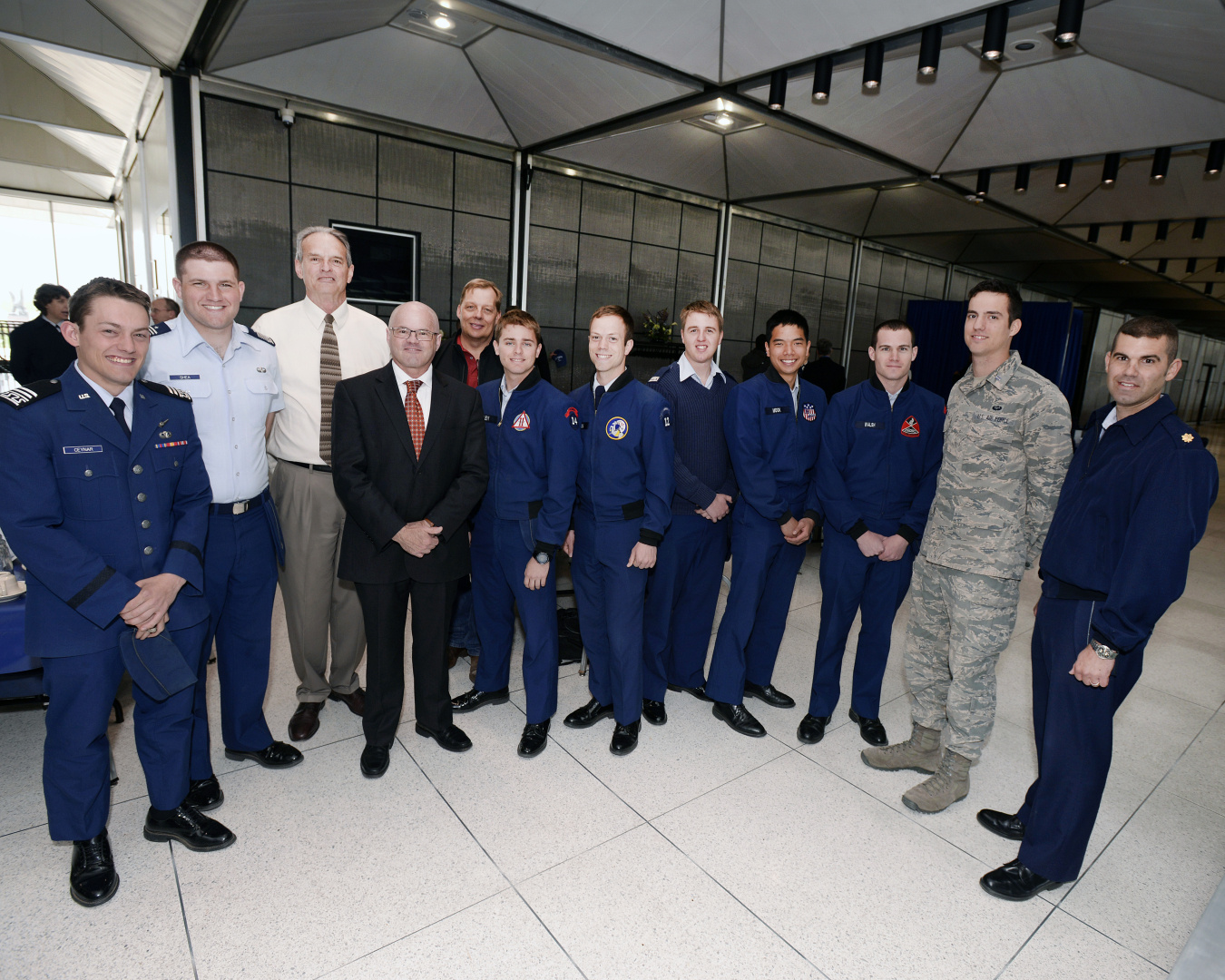Federal Energy Management Program honors military academies with DOE Excellence in Energy Award for innovative capstone engineering design projects...
Office of Energy Efficiency & Renewable Energy
May 15, 2014
Federal Energy Management Program Director Dr. Timothy Unruh (fourth from left) with Air Force Academy staff and students. Photo courtesy of Air Force Academy
As the nation’s largest consumer of energy consumption, the federal government has a responsibility to lead by example when it comes to implementing strategies that reduce energy use, slash carbon emissions, grow the economy and strengthen national security.
From improving vehicle and building efficiency to deploying solar, wind, biomass and geothermal technologies at facilities throughout the world, the U.S. military is answering the call by rapidly developing better energy-saving solutions for our troops on the battlefield, at sea, in the air, in disaster recovery zones and at home. This commitment is also apparent at America’s military academies, where cadets’ innovative ideas, aimed at solving major energy and environmental challenges, flourish through capstone projects, or complex, multi-year research and development work.
The Energy Department’s (DOE) Federal Energy Management Program (FEMP) is helping our military personnel realize these energy management goals. Researchers in the Department’s national laboratories work closely with cadets and midshipmen . The Air Force Academy, Military Academy, Merchant Marine Academy, and Naval Academy all participate in this program, which just completed its second year.
I recently had the honor of personally seeing the results of this innovative work from our nation’s best and brightest in the Naval Academy and at the Air Force Academy, where student teams presented their capstone engineering design projects. On behalf of FEMP, I announced winners of the DOE Excellence in Energy Award at both academies. Here are just a few highlights from the award-winning projects:
- The winning Air Force Academy team was challenged with designing a microgrid to allow their installation to go off the grid by 2040. Their design featured two biomass-fired combined heat & power facilities, fuel cells, and a complex load management scheme.
- The DOE award at West Point was presented to the cadets of companies A-2, B-2, and H-2. They achieved the greatest reduction in energy use within their barracks, when compared to a baseline period used for the corps-wide “energy reduction challenge.”
- The Naval Academy team developed a silver-chloride prototype fuel cell designed to provide electrical power in Forward Operating Base environments.
The Merchant Marine faculty is evaluating individual capstone projects and will announce their winner later this month.
These projects highlight how our men and women in the military are leading by example -- just as they’ve done throughout our nation’s history -- by identifying energy-saving solutions to urgent challenges and taking action to ensure a brighter future for America. Learn more about the FEMP’s work to make the federal government more sustainable.


